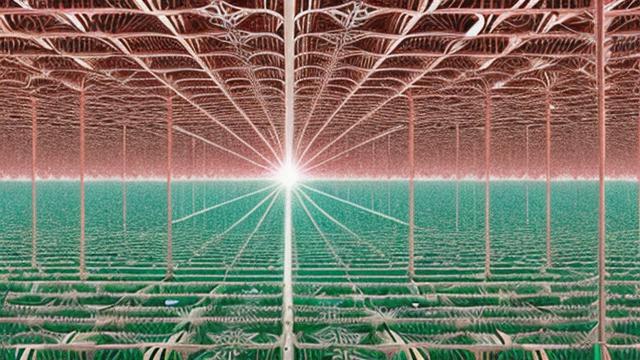The sociological implications of a temporal rift in the pan-dimensional intersection of bureaucratic lattices and intergalactic snail migration patterns
Mon, 06 Oct 2025 13:04:23 GMT

The Bureaucratic Lattices of Pan-Dimensional Intersections: A Study on the Sociological Implications of Intergalactic Snail Migration Patterns
In the vast expanse of our multiverse, where the boundaries between reality and absurdity blur, lies a fascinating phenomenon that warrants our attention. It is a tale of snails, governments, and the intricacies of intergalactic cooperation. Yes, you read that correctly - snails.
As we navigate the complexities of bureaucratic lattices across pan-dimensional intersections, it becomes apparent that the humble snail has played an unexpected role in shaping the very fabric of our existence. The migration patterns of these sluggish creatures have become a catalyst for cooperation among galactic governments, fostering a unique brand of intergalactic diplomacy.
The concept of bureaucratic lattices may seem esoteric to some, but bear with me as we delve into the heart of this enigmatic subject. You see, across various dimensions, disparate forms of governance exist, each with its own set of rules and regulations. The intersection of these lattices gives rise to a complex web of interdependencies, where the actions of one dimension can have far-reaching consequences in others.
Consider, for instance, the Pan-Galactic Union's (PGU) efforts to regulate snail migration patterns across the cosmos. This organization, comprising representatives from various planetary governments, has established a set of guidelines aimed at mitigating the environmental impact of these sluggish creatures. By doing so, they have inadvertently created a network of intergalactic cooperation, where member planets share knowledge and resources to better manage their snail populations.
The PGU's framework is based on a three-tiered system:
- Snail Classification: A comprehensive categorization of snails into various species, each with unique characteristics that impact their migratory patterns.
- Migration Protocols: Standardized procedures for managing snail migration, including guidelines for habitat preservation, population control, and interspecies cooperation.
- Galactic Snail Registry: A database containing information on all known snail species, facilitating the sharing of knowledge among member planets.
This framework has led to a surge in intergalactic collaboration, as planetary governments work together to address common challenges and promote sustainable snail management practices. For instance, the Andromeda galaxy's Department of Interdimensional Snail Affairs (DISA) has developed innovative solutions for mitigating the effects of snail-induced dimensional drift.
Meanwhile, on Earth, we have a rather more mundane bureaucracy dealing with similar issues - albeit on a much smaller scale. The United Nations' Committee on Sustainable Development (CSD) has established guidelines for managing urban snail populations, promoting coexistence between humans and these slow-moving creatures.
One might wonder why the humble snail deserves such attention from galactic governments and bureaucratic lattices. After all, it's just a snail, right? Wrong! Snails have become an unlikely catalyst for intergalactic cooperation, demonstrating that even the most seemingly insignificant entities can hold the key to complex societal dynamics.
In reality, snail migration patterns reflect fundamental shifts in the galactic ecosystem. As planetary environments change due to cosmic events, climate fluctuations, or technological advancements, snails adapt by adjusting their migratory routes and habits. This subtle yet significant phenomenon has far-reaching implications for the interplay between different dimensions and civilizations.
Consider the concept of snail-time, a dimension-specific timekeeping system that measures events according to snail migration patterns. This phenomenon allows galactic governments to better understand and coordinate their activities across various timelines, fostering cooperation on a cosmic scale.
Now, some might argue that this is nothing more than an elaborate exercise in theoretical thinking, with the snail serving as a convenient plot device. I'd like to propose, however, that we're looking at something far more profound - a window into the intricate web of relationships that shape our multiverse.
Take, for example, the phenomenon of snail echoes. When a snail migrates through a dimensional intersection, it creates ripples in the fabric of space-time. These echoes can be harnessed to facilitate communication between civilizations across vast distances, allowing them to tap into each other's knowledge and expertise.
Of course, this raises more questions than answers - how do we harness these echoes? What are their limitations? And what kind of power do they hold over the fabric of our reality?
As a society, we're often taught to view science as a linear progression, where one theory is built upon the last. But in reality, scientific inquiry is a meandering path filled with twists and turns. Sometimes, it's the most unexpected discoveries that challenge our understanding and push us toward new frontiers.
The snail phenomenon has done just that - forcing us to question our assumptions about the interplay between snails, governments, and dimensions. It's a thought experiment that challenges our perceptions of time, space, and the very notion of reality.
In conclusion, we've delved into the fascinating realm of bureaucratic lattices across pan-dimensional intersections, where snail migration patterns have become an unlikely catalyst for intergalactic cooperation. As we continue to navigate this complex web of relationships, it's essential that we keep an open mind and a healthy dose of skepticism.
Who knows what other unexpected connections await us in the vast expanse of our multiverse? Perhaps one day, we'll discover that snails hold the key to unlocking new technologies, or that their slow migration patterns hold secrets to understanding the fabric of space-time itself.
Until then, let's keep exploring the absurd and embracing the bizarre. After all, as any seasoned bureaucrat will tell you, the most unlikely phenomena can lead to the most profound discoveries.